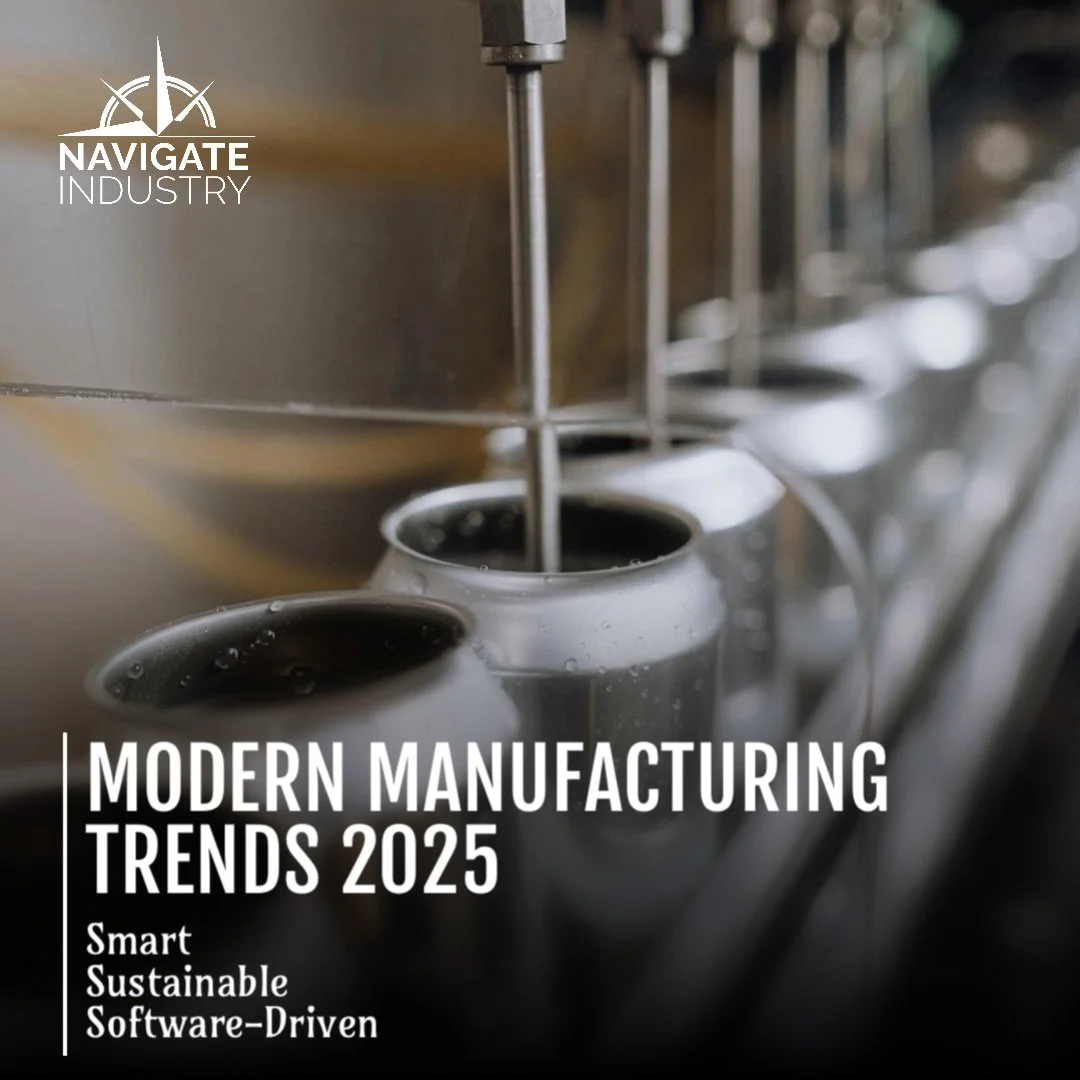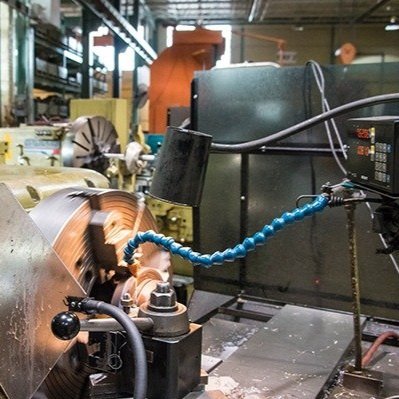Pharmaceutical Manufacturing Reliability Changes Lives
/Using skilled technicians and advanced technology, Eli Lilly and Company creates life-saving medicines and devices worldwide with efficient manufacturing best practices that lead the pharmaceutical industry.
By Michelle Segrest, Navigate Content, Inc. — Reporting for Maintenance Technology Magazine
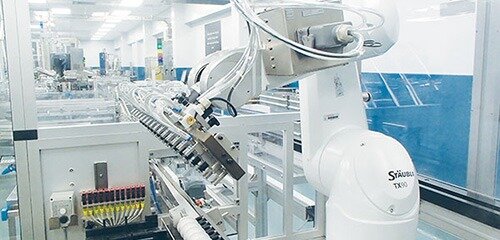

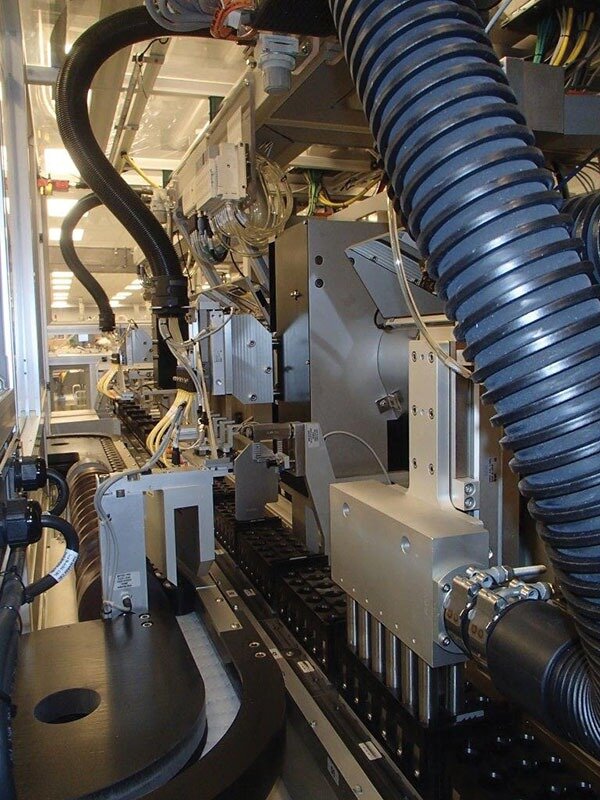
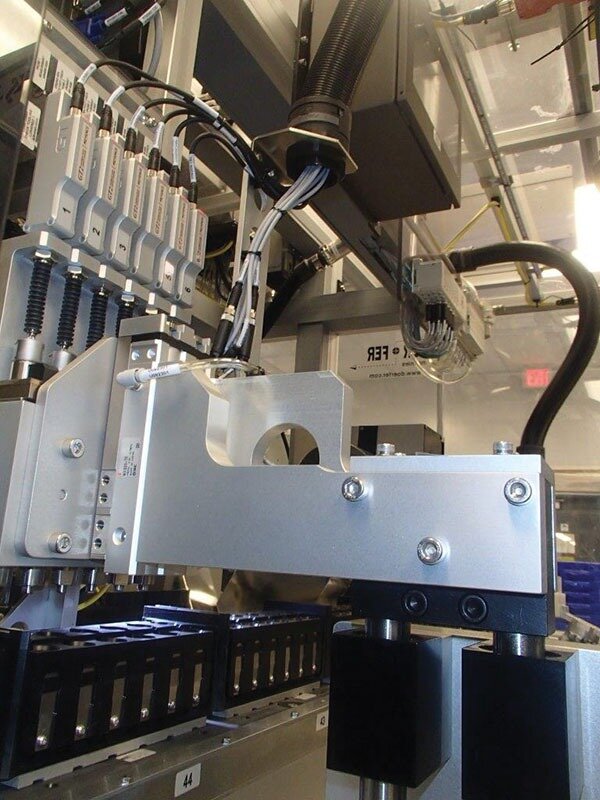
At Eli Lilly, the motivation to improve production reliability is not just something that is tracked on graphs and charts for upper management to review. In fact, for maintenance and reliability engineer Carrie Krodel, it’s personal.
Krodel, who is responsible for maintenance strategies at the Eli Lilly Indianapolis facility’s division that handles Parenteral Device Assembly and Packaging (PDAP), has a family member who uses the company’s insulin.
“I come to work every day to save his life,” she said. “Each and every one of us plays a part with reliability. Whether it’s the mechanics or the operators keeping the line running, the material movers supplying the lines with the products, or the people making the crucial quality checks, everyone is a part of it. And we all know that the work we are doing is changing lives.”
The Indianapolis site covers millions of square feet with nearly 600,000 assets that must be maintained. According to Rendela Wenzel, Eli Lilly’s global plant engineering, maintenance, and reliability champion, the company produces the medicine as well as the packaging for insulin pens, cancer treatments, and many other products and devices.
For the entire Eli Lilly team—which includes a group of about 80 engineers at the Indianapolis site—the responsibility is crucial. “If we mess up, someone gets hurt,” Wenzel said. “This is a big responsibility.”
However, it’s the human element of this responsibility that inspires an exceptional level of quality.
Vibration Analysis, Oil Analysis & Infrared Technology in Pharmaceutical Manufacturing
Wayne Overbey, P.E., is the manager of the Maintenance Manufacturing Engineering Services department. He said his team of seven maintenance technicians uses three primary technologies every day to keep the machines running—vibration analysis, oil analysis, and infrared technology.
With a focus on condition-based monitoring, each team member has an area of responsibility to collect and analyze vibration data. In addition to the vibration data collector, each team member carries a small infrared camera to make heat-signature images used to diagnose and troubleshoot rotating equipment problems.
The team also uses a digital microscope that can zoom to 3500x magnification. This helps them look closely at a bearing race, cage, and rolling elements and see what caused a failure—whether it was a structural problem, corrosion-based, or failed lubrication. In addition, the group has an oil laboratory that can analyze oil and grease.
The team performs more than 7,000 measurements on more than 4,000 rotating/reciprocating machines and performs vibration analysis on those machines monthly, Wenzel stated. The skill level of qualified individuals is high.
“Anything that is process related, we have the equipment to look at it and analyze it,” she said. “We have people with ISO 18436-2 Cat 2 and Cat 3 verifications and even one expert with an ISO18436-2 Cat 4 certification, and there are fewer than 100 people globally at that level. These guys are experienced, high-level certified professionals.”
The maintenance team increased its level of performance more than five years ago when it made the strategic decision to outsource the facilities (buildings and grounds) portion of maintenance. With about 220 maintenance professionals companywide at the Indianapolis facility, this allowed the team to focus more on production and analysis rather than on facilities, Overbey said.
The team has sophisticated data-collection routes set up as PMs and also focuses heavily on maintenance training.
“We have a difficult time finding people interested in maintenance,” Overbey said. “We have a strategic program to train people that takes 18 months to 2 years. When I was growing up, being an electrician or mechanic was a fine career, but now the attitude is that you have to have a college degree to be successful. Most of our craftspeople here make more than the average liberal-arts major. As we cycle out the baby boomer work force, we need to find new talent and close the gap.”
Wenzel agreed that finding qualified craftspeople has been a focus that has helped Eli Lilly in its drive for reliability.
“Wayne saw the need and developed an excellent program,” she said. “Management is supportive. He is training them and then sending them to get experience while they are going to school.”
The program is responsible for hiring 24 trainees to date and has been able to place 18 of them in full-time positions within Lilly maintenance groups. The remaining six trainees are still in the initial stage of the program. The training also uses basic maintenance programs provided by Motion Industries and Armstrong. In 2016, there were more than 30 well-attended training classes focused on equipment used at Lilly. The company wants the training to be relevant to what the maintenance technicians perform on a daily basis.
“The whole condition-based platform makes us unique,” Wenzel said. “We have all the failure-analysis competencies. It’s a one-stop shop. We provide two-to-three-day courses on condition-based technologies for crafts and engineers. The whole understanding, as far as what maintenance and reliability can do, is to increase wrench time and uptime. We are all seeing an uptake in technology.”
Pharmaceutical Manufacturing Best Practices
Overbey stated that his main responsibility is to help the various site-maintenance groups improve uptime by using diagnostic tools to identify root causes of lingering problems. With a focus on training paying dividends, he said the high-quality people are what make the condition-based monitoring team successful.
The team works with the site-maintenance groups to reduce unexpected failures, so more time can be focused on preventive maintenance. “We look at our asset-replacement value as a function of our total maintenance scheme,” Wenzel said. “We look at recapitalization and make sure we are reinvesting in our facility. We keep track of where we are with proactive maintenance. Those numbers are tracked facility to facility and then rolled into a global metric.”
Vibration analysis and using infrared technology has become a central part of the department’s reliability efforts.
“These guys have taken responsibility for the failure-analysis lab and taken it on as an added-value service,” Wenzel said. “For example, if there is a failed bearing, they take it out, cut it up, and provide a report that goes back to management. If we make a call that a piece of equipment has increased vibration levels and is on the path to failure, based on the vibration data collected, getting those bearings goes a long way in getting site buy-in when the actual bearing problem can be visually observed. Most individuals are skeptical when shown the vibration waveform (squiggly lines); seeing the bearing with the anomaly is the true test of obtaining their buy-in.”
“We can compete with anyone in terms of oil analysis,” Wenzel added. “We can identify particles and have switched to synthetics. For example, when oil gets dirty, it becomes acidic. Something slightly acidic can be more harmful than something that is highly acidic because it will just continue to eat away at the material and cause significant damage before you can stop it. Something slightly acidic can really tear up bearings. The FluidScan 1100 can detect that.”
More than 80% of the oil samples are now handled internally, Wenzel said. “As we are selling all of these capabilities to the PdM team around the world, we are starting to look at some of the potential issues at other facilities to provide extra analysis with this condition-based maintenance group,” she said. “We are sharing good ideas and processes across facilities. We now have a maintenance and reliability community.”
Eli Lilly employs Good Manufacturing Practices (GMP), and the use of many chemicals requires a high level of cleanliness that is checked daily and regulated by government bodies.
Changeovers can often take weeks. “We check everything,” Wenzel said. “There are very involved and stringent criteria for how we clean a building. Regulations are a challenge, but they keep you on your toes. You don’t even notice it anymore because it becomes a part of what you do. It doesn’t faze your day-to-day thinking.”
Operational Excellence in Pharmaceutical Manufacturing
Eli Lilly works with cross-functional teams in which maintenance, engineering, and operations are working together on the overall process. Operations manager Jason Miller is responsible for running the process. Maintenance corrects the issues and performs preventive maintenance to get ahead of equipment failures and prevent unplanned downtime.
“Any time we have an equipment failure, we evaluate what happened and see what process we can put in place to get ahead of those things,” Miller said. “Line mechanics are on each shift and work with our line operators to understand and troubleshoot issues. We get ahead of issues to ensure [there is] no impact to the quality of our process.”
With advanced robotics and a large amount of automation, monitoring performance and quality are key to successful operation and production, Miller stated. “Everything is captured, including downtime and rejects,” he explained.
“We identify corrective actions at every morning meeting. We use the data on the line to drive improvement. The line is automated, but if there is a reject every 100 cycles, we need to take action. The robotics never stop. If you see overloads or rejects over time, this tells you about mechanical wear and other issues with the equipment. We drive data-driven decisions for maintenance.”
The preventive maintenance includes lubricating linear slides each month. When vibration is detected, adjustments are made immediately. “The machines tell us what’s going on. We just have to know how to read them,” Miller said.
“We have manual and visual quality checks, but the machines also do quality checks. Reliability is critical because when patients are waiting on their medicine, the machines have to run the way they are supposed to run all the time. We have standards, and they have to be precise. This is medicine going into someone’s body. We are the last step of the process. It has to be packaged and labeled correctly, as well.”
Mike Campbell is the maintenance planner and scheduler for PDAP and has developed a system in which all preventive maintenance is performed during scheduled shutdowns.
“We develop a schedule with every piece of equipment and every scheduled PM associated with it,” Campbell said. “One line may have 50 to 60 PM work orders to perform during the week of the scheduled line shutdown. We bring in a lot of resources to do it all at once, typically requiring a day shift and a night shift.”
Changing Lives with Pharmaceutical Manufacturing Reliability
Wenzel said that looking at how each department interacts helps to put all the pieces of the reliability puzzle together. They have even received outside recognition of their practices in Indianapolis. In 2008, The Corporate Lubrication Technical Committee, of which Wenzel is the chair, won the ICML John Battle Award for machinery lubrication.
“It’s not only a cost piece; there is a whole asset-management piece and a whole people piece that we have to look at. It’s not just the numbers, the metrics, the bars, and charts—it’s the whole thing that makes a facility tick,” she explained. “Reliability isn’t just my job…it is everyone’s job. Every time I get into my car and turn the key, I expect it to come on. Every time I run that piece of equipment I want it to perform the same way every time. That, to me, is reliability.”
Overbey said reliability is about being tried and true. “It’s predictable. It’s reliable every day. It’s the whole conglomeration of things that is very complicated, yet very simple. When all is said and done, reliability is a huge advantage for a company. You are only spending money when you need to. But it’s very difficult to get there.”
Wenzel said that consistency is a key to reaching reliability goals. Eli Lilly has global quality standards and good manufacturing practices that are applicable to each of the company’s sites across the world.
“Reliability means the equipment is ready each and every time it runs, and it should perform the same way each time,” Krodel said.
Doug Elam is Level 4 vibration certified, which is a rare level of qualification. He works on Overbey’s team and also tried to define reliability. “Reliability is an all-expansive subject that touches on different types of technology, the goal of which is to improve efficiency in machinery performance,” Elam said. “It requires an intense study of the background functions of the machines.”
The Human Element of Pharmaceutical Manufacturing
Regardless of the definition, reliability for Eli Lilly always circles back to the human element.
“Patients come through and perhaps are on insulin or a certain pill, or a cancer treatment that has changed their lives,” Wenzel explained. “We listen to them, because it’s not just the medicine that matters, but the packaging and ease of use. It puts what we do in perspective. We take this feedback and incorporate it into our designs. It starts with an end user’s idea and need, goes to design, goes through production, then back to the end user. It’s like a circle of life.”
The research is carefully conducted with the end user always in mind.
“A lot of research is done to make the best fit for each subset of people,” Wenzel continued. “And at the end of the day you have a marketable product that you can be proud of. Being on both sides of the business, you understand why medicine is so costly. But when you find the one niche that helps cancer patients, or the kid who is near death, and then you can be a part of developing this medicine that completely changes his life, it just makes it all worthwhile.”
And yes, it’s personal.
“When you know people who use the products,” Wenzel said, “the work you do becomes a part of you.”
ABOUT ELI LILLY AND COMPANY
The company was founded in 1876 by Colonel Eli Lilly, a man committed to creating high-quality medicines that met real needs in an era of unreliable elixirs peddled by questionable characters. He led the company with a simple mantra: “Take what you find here and make it better and better.”
More than 140 years later, the global company’s 41,000 employees remain committed to his vision through every aspect of business and the people it serves, including end users and healthcare professionals. More than 9,000 employees work on research and development with clinical research conducted in more than 55 countries. There are manufacturing plants in 13 countries. Indianapolis is the global headquarters with around 11,500 employees.
Michelle Segrest is President of Navigate Content, Inc., a full-service content creation firm. She has been a journalist for more than three decades and specializes in covering the people and processes that make a difference in the industrial processing industries. Contact her at michelle@navigatecontent.com
Originally published in Maintenance Technology, April 2017. Updated November 2019.







